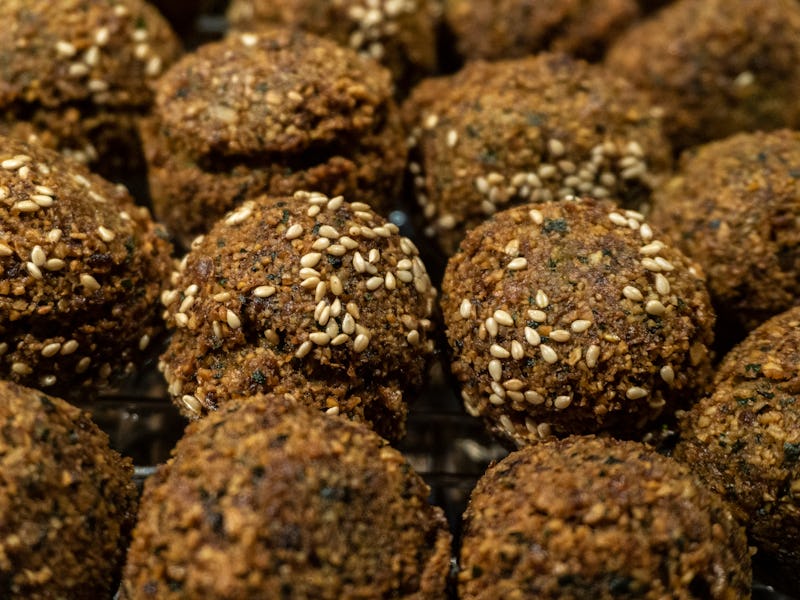Falafel: How a Biblical Dish Can Become the Food of the Future
Bring in the bugs.

If you took a spin on Google on Tuesday, you likely noticed an adorable, anthropomorphic ball of falafel getting snug in a bit of pita with some friends (who are also falafel). This is because, like other cultural icons before it, falafel is now a Google Doodle.
Google tells Inverse that the falafel doodle is running because June is “peak chickpea growing season!” That’s true, but it also begs the question for how long? Chickpeas are now a key part of falafel, but they are also highly susceptible to climate change. If crunchy, delicious falafel is going to make it to the future, chefs will likely have to turn to another foundational ingredient.
And that ingredient will be bugs.
Google turned artist Sophie Diao's sketches of falafel friends into this GIF for Tuesday's celebration of falafel.
What Is Falafel
Falafel is different things to different people. Literally, it is a deep fried ball or patty made from ground chickpeas, fava beans, or both. The dried legumes are soaked, ground, and then kneaded, before the mixture is spiced, rolled, and fried in hot oil. Different Middle Eastern countries have various preferred recipes, and the food’s origin is hotly debated. That debate is often fueled by regional tensions, but what is easily agreed upon is that falafel is delicious.
But Falafel Is In Danger
In The Foods of Israel Today author Joan Nathan describes falafel as a “biblical food” with ingredients “as old as you’re going to get.” But how well those ingredients will fare in the future is debatable. Chickpeas are a sensitive crop. Wet conditions raise the risk of fungal disease, and droughts can kill off a season’s bounty. It’s a legume that especially reacts negatively to temperature changes and exposures to heat stress — which is why scientists are racing to develop genetically modified chickpeas that can survive the effects of the climate crisis.
Goodbye ... falafel?
Bring in the Bugs
Chickpeas are an important food source worldwide and the second most common legume farmed. But some scientists argue that they are replaceable.
In 2017, scientists from the Technical Research Center of Finland (VTT) announced that they’d developed food ingredients from mealworms and crickets that could easily be used to make falafel. What underlies this all is something called the “dry fraction method” — a technique that produces powder from insects with varying flavors and degrees of coarseness.
In an experiment, VTT scientists were able to successfully replace between five and 18 percent of falafel dough with insect fractions, which can effectively bind water and fat. Because insects are rich in protein, the mealworm and cricket-filled falafel had triple the amount of protein typically found in falafel.
Insects are already part of 2 billion individuals’ diets worldwide. The question now is: How can the other 5 billion be convinced? The United Nations is interested in the future of edible bugs because insects are proven to be highly nutritious, healthy, and environmentally stable feed. Rumor has it they are pretty tasty, too. If you want to make your own bug falafel, there are already recipes online ready for you to use.